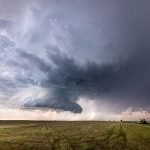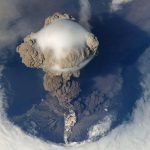Prehistoric humans rarely mated with their cousins, shows study
Scientists screened ancient humans that lived during the last 45,000 years to find out how closely related their parents were.
The results surprising: ancient humans...
Modern snakes evolved from a few survivors of dinosaur-killing asteroid
A new study suggests that all living snakes evolved from a handful of species that survived the giant asteroid impact that wiped out the...
Scientists solve mystery of supercell storms’ icy plumes
The most devastating tornadoes are often preceded by a cloudy plume of ice and water vapor billowing above a severe thunderstorm.
New research reveals...
Who was the king before Tyrannosaurus?
Iconic tyrannosauroids like T. rex famously dominated the top of the food web at the end of the reign of the dinosaurs.
But they didn’t...
US war on terror has cost $8 trillion, 900,000 lives in last two decades,...
Nearly 20 years after the United States’ invasion of Afghanistan, the cost of its global war on terror stands at $8 trillion and 900,000...
Ocean worlds with hydrogen-rich atmospheres could be the perfect spots for life
The search for planets beyond our Solar System (extrasolar planets) has grown by leaps and bounds in the past decade.
A total of 4,514 exoplanets...
Would we still have severe thunderstorms over North America if the Gulf of Mexico...
New study looks at why North America is the global tornado hot spot.
The eastern half of the U.S is one of the principal hot...
Scientists find what triggered the rapid climate change 55 million years ago on Earth
Scientists have uncovered a fascinating new insight into what caused one of the most rapid and dramatic instances of climate change in the history...
Ancient volcanoes may have spurred first ‘whiffs’ of oxygen in Earth’s atmosphere
Volcanic eruptions may have stimulated population surges of marine microorganisms, creating the first puffs of oxygen into the atmosphere, a new analysis of 2.5-billion-year-old...
Scientists retrace the lifetime journey of a 17,000-year-old Arctic woolly mammoth
Researchers have retraced the astonishing lifetime journey of an Arctic woolly mammoth, which covered enough of the Alaska landscape during its 28 years to...










